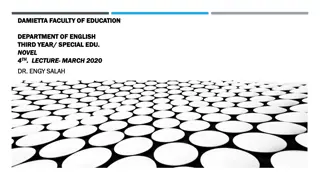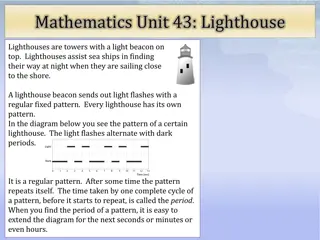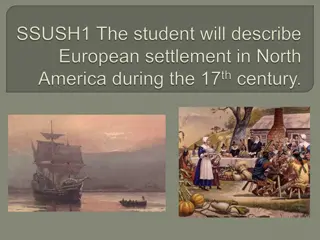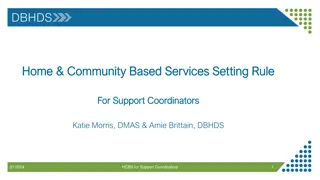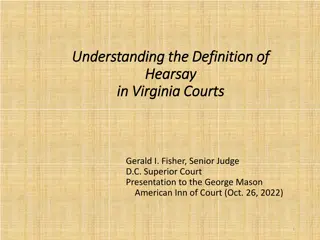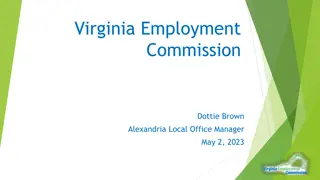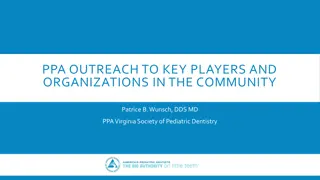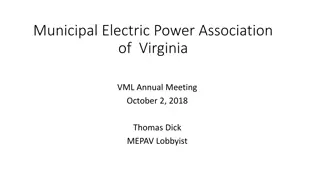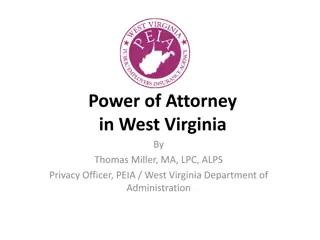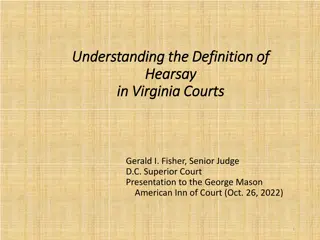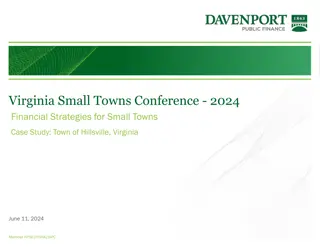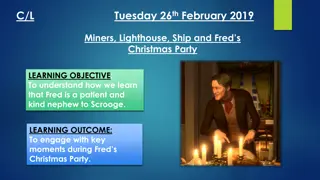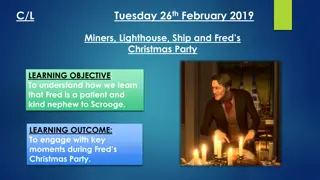Analysis of Virginia Woolf's Novel "To the Lighthouse
Explore the themes, characters, and narrative structure of Virginia Woolf's novel "To the Lighthouse." Learn about the author's life, writing style, and key facts regarding the novel's publication. Delve into the three parts of the story, focusing on the Ramsay family dynamics and the character of Lily Briscoe. Discover the literary significance of this Modernist work set in Scotland during the early 20th century.
Download Presentation

Please find below an Image/Link to download the presentation.
The content on the website is provided AS IS for your information and personal use only. It may not be sold, licensed, or shared on other websites without obtaining consent from the author. Download presentation by click this link. If you encounter any issues during the download, it is possible that the publisher has removed the file from their server.
E N D
Presentation Transcript
Bon Secours College for women, Thanjavur Department of English Proudly Presents
To the Lighthouse by Virginia Woolf . Prepared by Dr. S. Esther Arulmani, Asst. Prof. Dept. of English, Bon Secours College for Women, Thanjavur
About the Author virginia Woolf was born in 1882 in London when she was thirteen her mother died which caused her mental brreakdown. She married the writer Leonard Woolf with whom she founded the Hogarth Press in 1917. Woolf s experiments with prose marked a radical departure from the tradition of the Victorian novel and created fresh possibilities for the novelistic form. Following the early deaths of her parents and sister, Woolf suffered periodic nervous breakdowns throughout her life and, in 1941, fearing another breakdown, she drowned herself in the River Ouse.
Key Facts about - To the Lighthouse Title: To the Lighthouse When Written: 1925-1927 Where Written: London and Sussex When Published: 1927 Literary Period: Modernism Genre: Novel of Consciousness Setting: Isle of Skye, Scotland 1910-1920 Climax: Mrs. Ramsay s vision of eternity at the dinner table Point of View: Multiple
Part - I - The window The novel is set in the Ramsays' summer home in the Hebrides, on the Isle of Skye. It begins with Mrs Ramsay assuring her son James that they should be able to visit the lighthouse on the next day. This prediction is denied by Mr Ramsay, who voices his certainty that the weather will not be clear, an opinion that forces a certain tension between Mr and Mrs Ramsay, and also between Mr Ramsay and James. This particular incident is referred to on various occasions throughout the section, especially in the context of Mr and Mrs Ramsay's relationship.
The Ramsays and their eight children have been joined at the house by a number of friends and colleagues. One of them, Lily Briscoe, begins the novel as a young, uncertain painter attempting a portrait of Mrs. Ramsay and James. Briscoe finds herself plagued by doubts throughout the novel, doubts largely fed by the claims of Charles Tansley, another guest, who asserts that women can neither paint nor write. Tansley himself is an admirer of Mr Ramsay, a philosophy professor, and his academic treatises.
The section closes with a large dinner party. When Augustus Carmichael, a visiting poet, asks for a second serving of soup, Mr Ramsay nearly snaps at him. Mrs Ramsay is herself out of sorts when Paul Rayley and Minta Doyle, two acquaintances whom she has brought together in engagement, arrive late to dinner, as Minta has lost her grandmother's brooch on the beach.
Part 2 - Time Passes The second section "Time passes" gives a sense of time passing, absence, and death. Ten years pass, during which the First World War begins and ends. Mrs Ramsay dies, as do two of her children Prue dies from complications of childbirth, andAndrew is killed in the war. Mr Ramsay is left adrift without his wife to praise and comfort him during his bouts of fear and anguish regarding the longevity of his philosophical work. This section is told from an omniscient point of view and occasionally from Mrs. McNab's point of view. Mrs. McNab worked in the Ramsay's house since the beginning, and thus provides a clear view of how things have changed in the time the summer house has been unoccupied.
Part 3 - The Lighthouse In the final section, "The Lighthouse", some of the remaining Ramsays and other guests return to their summer home ten years after the events of Part I. Mr Ramsay finally plans on taking the long-delayed trip to the lighthouse with daughter Cam(illa) and son James. The trip almost does not happen, as the children are not ready, but they eventually set off. As they travel, the children are silent in protest at their father for forcing them to come along.
However, James keeps the sailing boat steady and rather than receiving the harsh words he has come to expect from his father, he hears praise, providing a rare moment of empathy between father and son. Cam's attitude towards her father changes also, from resentment to eventual admiration. They are accompanied by the sailor Macalister and his son, who catches fish during the trip. The son cuts a piece of flesh from a fish he has caught to use for bait, throwing the injured fish back into the sea.
While they set sail for the lighthouse, Lily attempts to finally complete the painting she has held in her mind since the start of the novel. She reconsiders her memory of Mrs and Mr Ramsay, balancing the multitude of impressions from ten years ago in an effort to reach towards an objective truth about Mrs Ramsay and life itself. Upon finishing the painting (just as the sailing party reaches the lighthouse) and seeing that it satisfies her, she realises that the execution of her vision is more important to her than the idea of leaving some sort of legacy in her work. W


